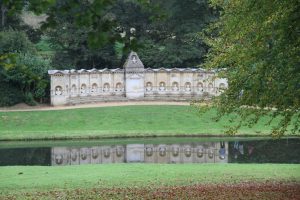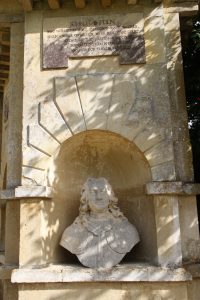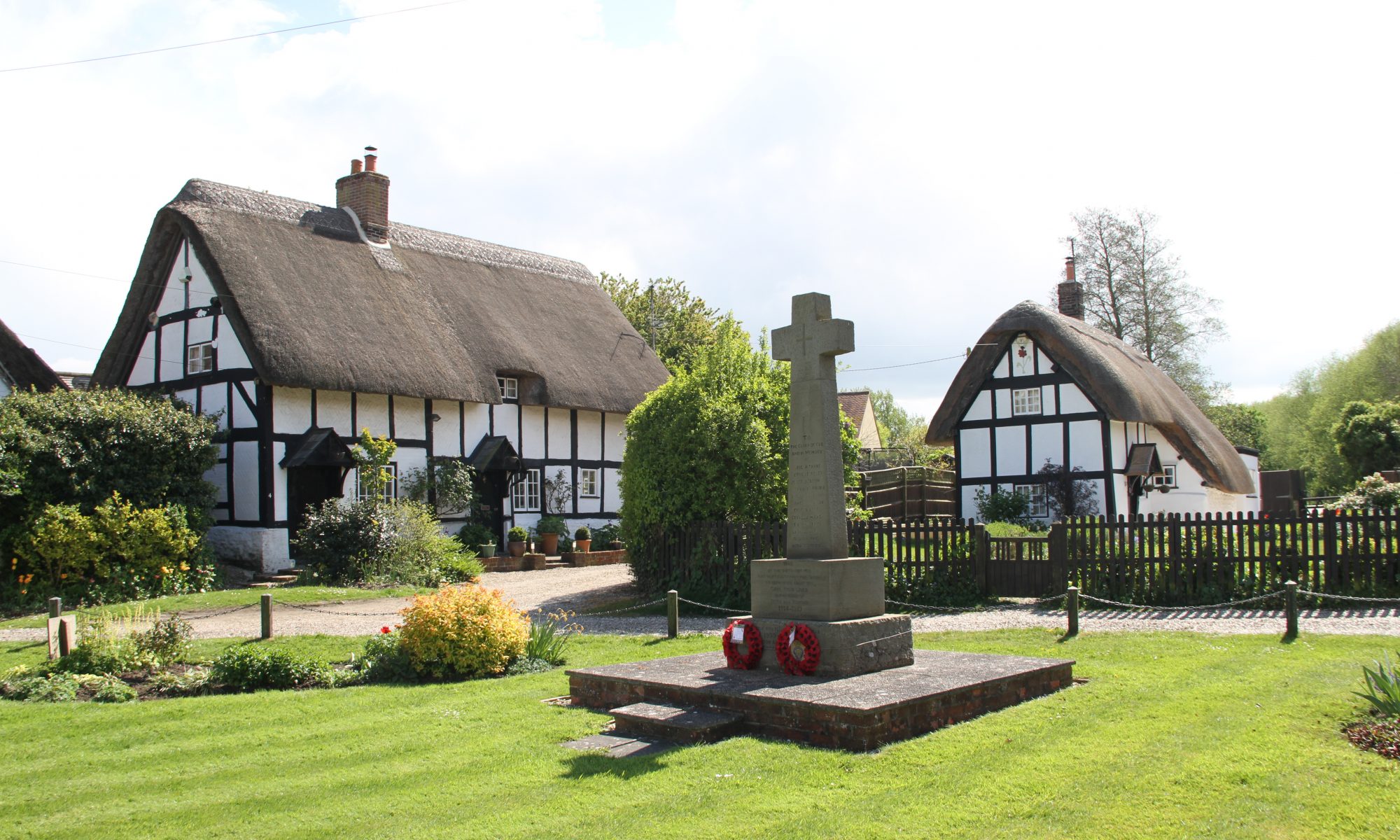The Hampdens had for over a 100 years been troubled by a slur on the family name perpetuated by the Earl of Buckinghamshire’s political detractors. Sir Robert Walpole the de facto first Prime Minister ordered Lawrence Echard, for political reasons, to write the fanciful story of Hampden’s pistol exploding at the battle of Chalgrove. Echard’s academic tome, the History of England, was presented in 1721 to King George 1. In the errata on page 572 is the story of the exploding pistol. The absurdity of the story is apparent but told on such authority as Echard and the King gentlemen were prudent in their opinions.
John Hampden’s reputation as a liberal and Patriae Pater was used to bolster the political argument against the ruling elite. In 1634 John Hampden became a ‘British Worthy’ and his bust stands alongside eleven others in the ground of Stowe House.


Hampden’s reputation, according to liberals, stood alongside those of Shakespeare, King Alfred, King William III, Queen Elizabeth 1 and Sir Francis Drake. The Hampden’s were in the America’s in 16th century and had established strong business and political associations in New England by the 18th century. In 1765 ‘John Hampden’ delivered a rousing speech in Boston, Mass delivered by James Otis who incited the phrase, ‘No taxation without representation’. In 1775 Hampden/Sydney College was founded.
Following the War of Independence land was given to those who fought the British as a thank you. Several towns named Hampden sprang up in his honour. In 1782 a Hampden Club was established by an ancestor of Guy Fawkes who invoked Hampden’s reputation as a liberal. The Peterloo massacre involved the Hampden Club. Lord Nugent campaigned to be an MP for Wendover, John Hampden’s old seat, in the early 18th century using Hampden’s name to bolster his appeal. Nugent’s adversaries revived the story of the exploding pistol to counter his popular appeal. The Earl of Buckinghamshire suffered an ongoing onslaught that his ancestors were cheapskates in reference to Walpole’s story that a pistol exploded in Hampden’s hand at the battle of Chalgrove.
Lord Nugent’s research into the circumstance of how John Hampden met his death came to the attention of the Earl of Buckinghamshire in March 1828. In early April Lord Nugent was at Great Hampden by invitation. Dr Grace’s letter to the Earl 5th April recounts that Nugent was unable find a portrait of John Hampden. In this letter Dr Grace pleaded with the Earl on Nugent’s behalf that when the floor was taken up in the summer for permission to find John Hampden’s grave. Dr Grace wrote, ‘depends on finding the grave of the Patriot and would very much like to look into the vault if he fails in finding any inscription when the floor is removed’, Dr Grace’s words, to look into the vault and find John Hampden’s grave implies that he had not been in the church. The Hampden’s family church does not possess a vault and as John Hampden was buried in secret a tombstone has never covered his grave.
On the morning of 21st July 1828 Nugent came to Great Hampden church with an entourage of Lords, gentlemen, newspaper reporters and gravediggers. Nugent was taken aback on entering the church as there was no vault and no one knew of Hampden’s grave site in the chancel. After some discussion the gravediggers were ordered to dig at a place beneath the plaque to Hampden’s first wife sited on the south wall. Nothing was found and in desperation the gravediggers were ordered to dig towards the altar. Several coffins were unearthed but each had names other than John Hampden. Up by the altar on the north wall they came to a coffin and on touching the nameplate it crumbled away. This Nugent declared was John Hampden’s coffin and ordered that it was opened. Plumbers cut open the lead coffin to expose an almost intact body. From the record of the tombs in Hampden Manga that we now know it was William Hampden, John’s father, who died 1597, was the unfortunate corpse that was disinterred.
It was reported that a bag was found inside the coffin containing the bones of the body’s right hand. Hark back to the battle. The pistol explodes shattering Hampden’s hand the cadavers would be scattered around the battlefield. It is inane to begin inventing a scenario whereby the bones were collected up off the battlefield to find their way into the coffin. ‘The Times’ published Lord Nugent’s ‘press release’. Here Nugent states that an old document, still in existence, gave the full account of the grand procession to the church. This invention of a full account was given in the fictitious ‘The Worthy Discourse’ that Nugent published in 1847. ‘The worm of corruption was busily employed’, stated Nugent, ‘which after a lapse of nearly two centuries, in finding living creatures preying upon the seat of intellect’, is beyond belief. The narrative continued with many other inconsistencies too numerous to detail.
The story of the exhumation is told in The Controversy of John Hampden’s Death (link) and Hampden Magna (Link) shows the location of the graves as of 1663.

